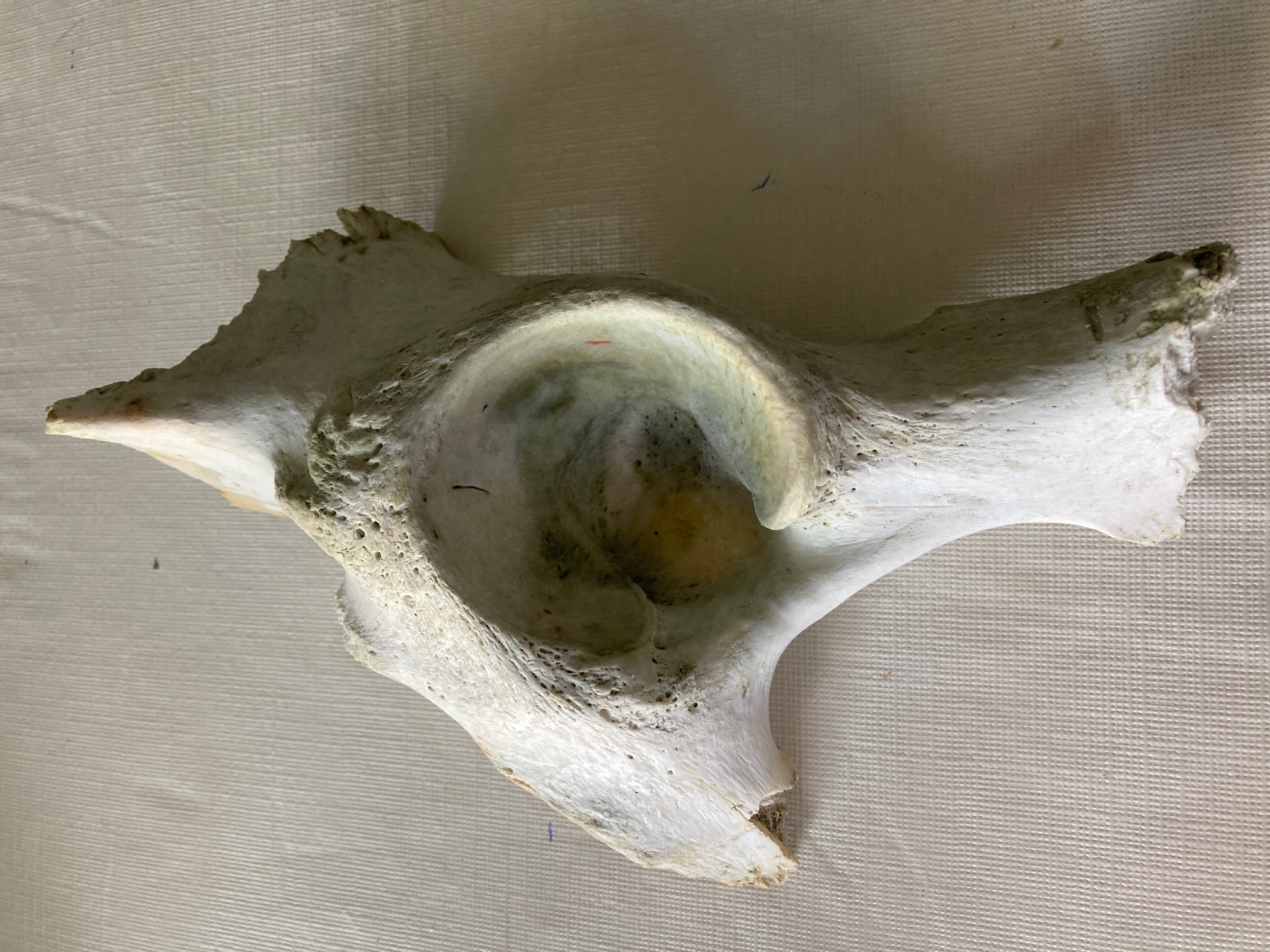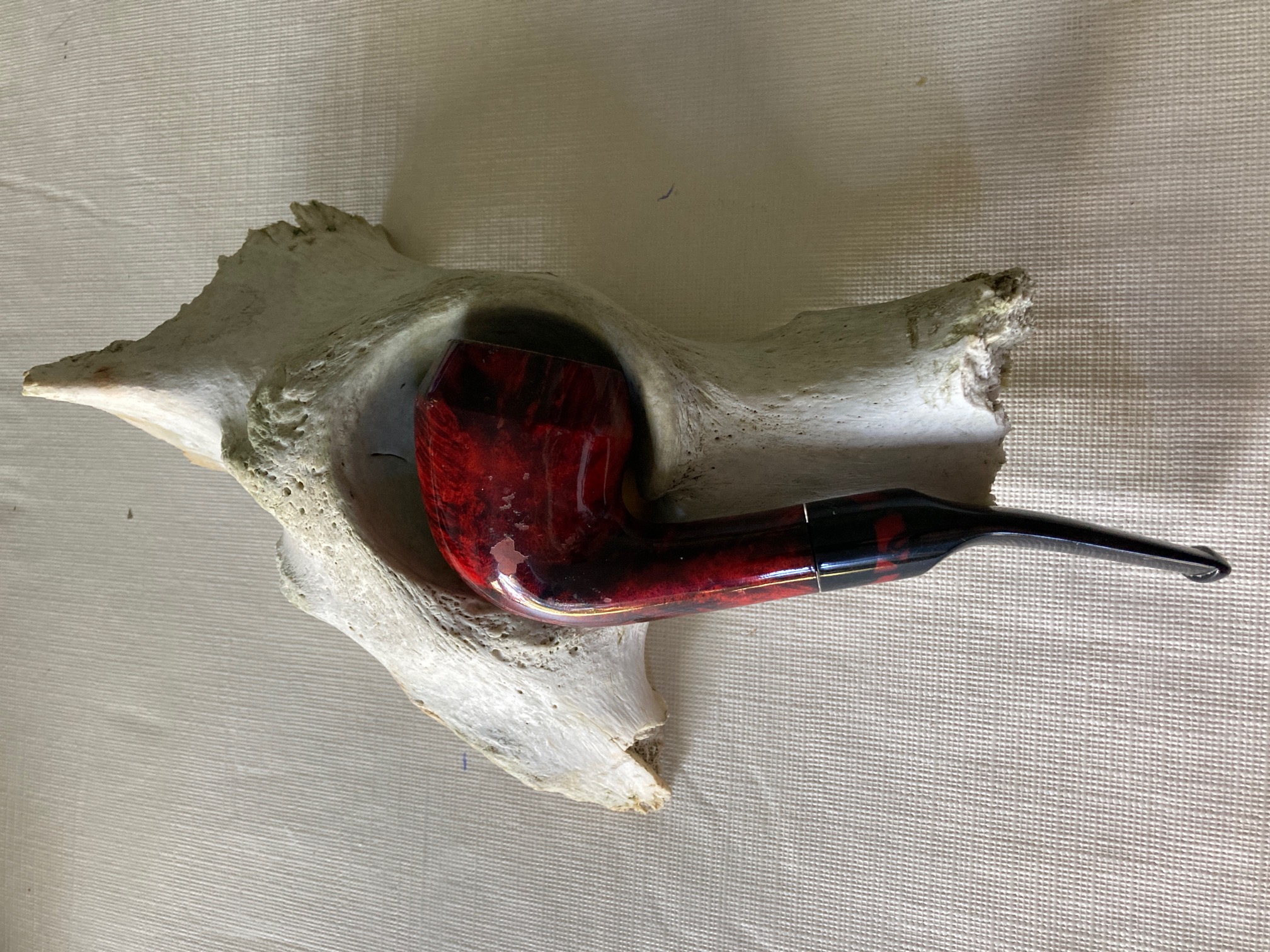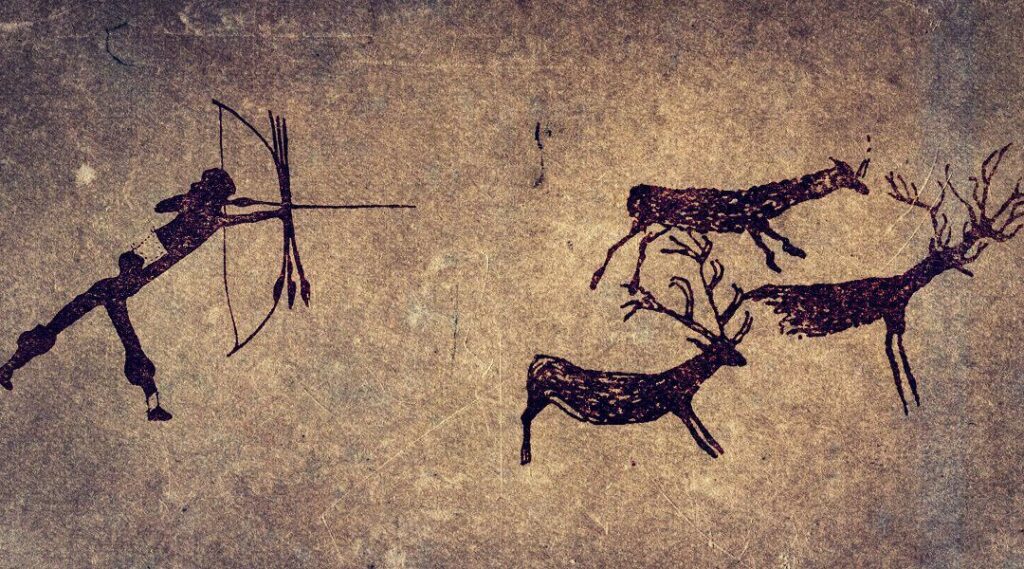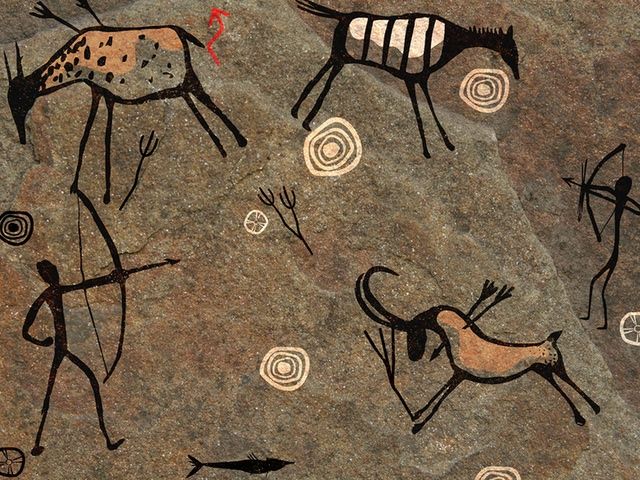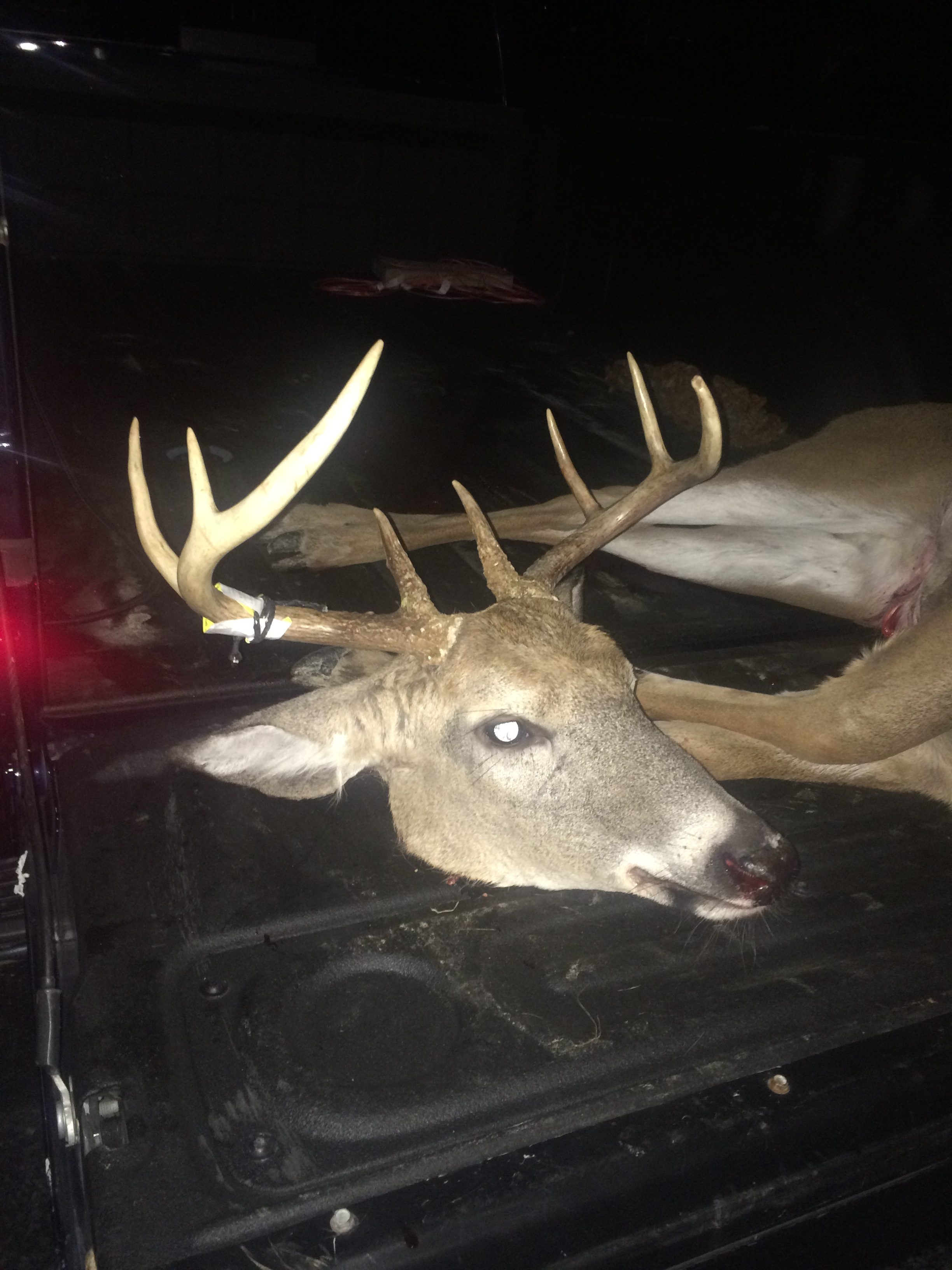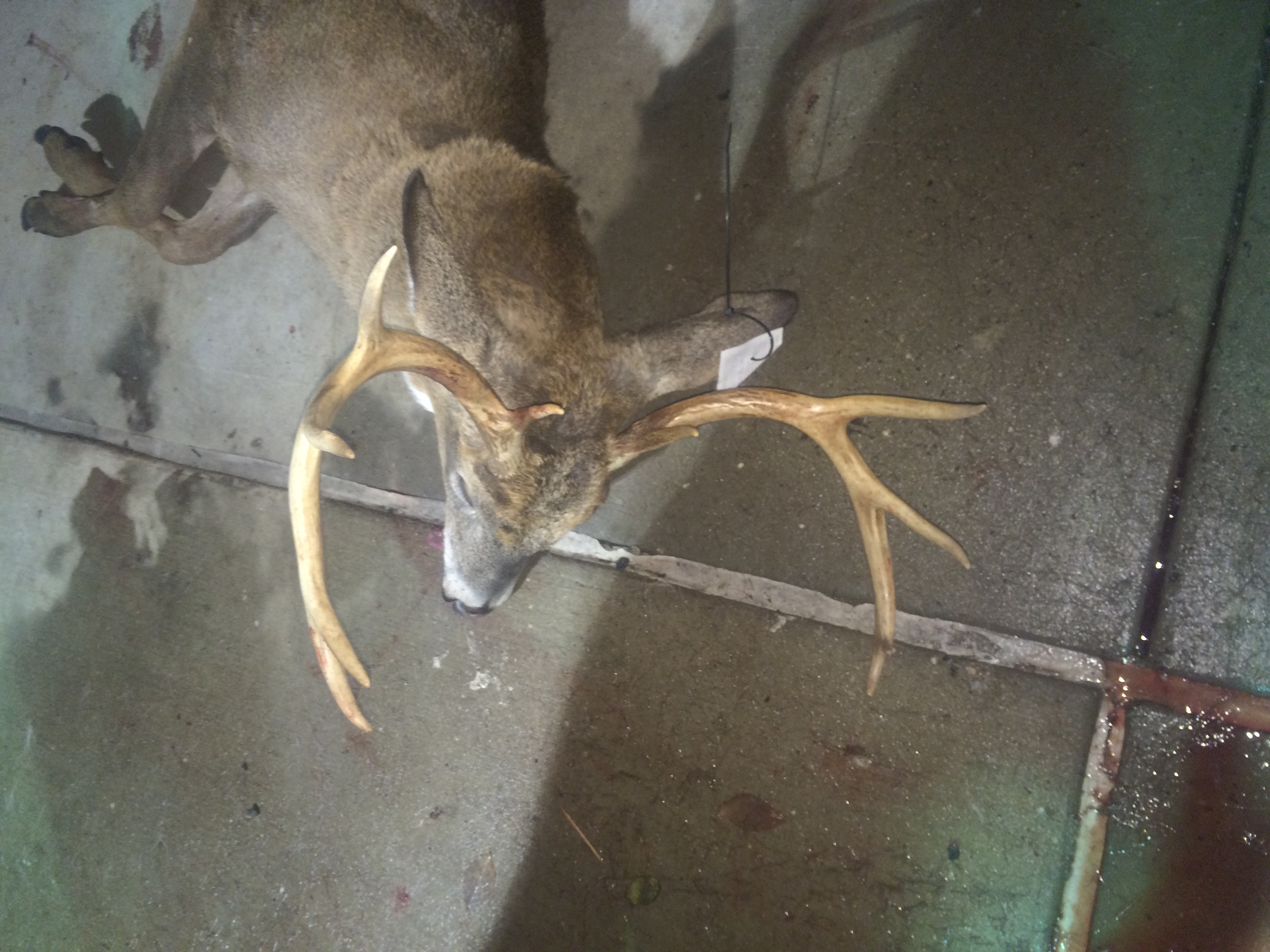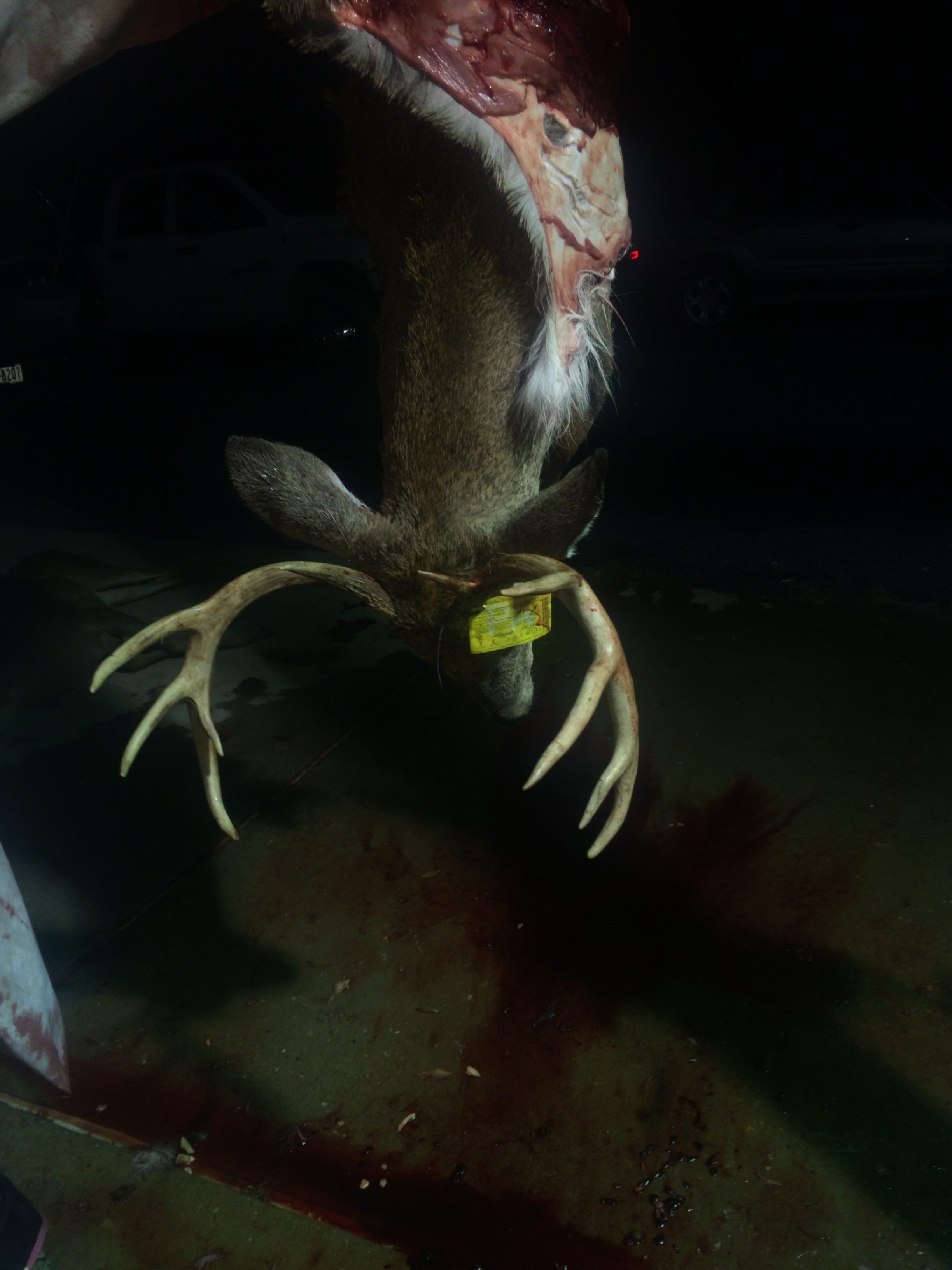Posts Tagged → trophy
A fabulous hunting trophy
Another PA archery season over (UPDATE: No, it wasn’t over, I have not kept up with new PA archery season dates), another season I did not arrow a deer or a bear. It’s not that I could not have killed a buck with a gigantic rack, I could have, a hundred times. It is that I chose not kill him. He isn’t necessarily tame, but he has been hanging around an awful lot. It would have been easy to send an arrow or a bolt through him from a porch or an upstairs window. But in my old-er age, I must be turning soft-hearted. He even came into a ground blind I was in with a crossbow, and puttered around. I decided to admire him, instead.
Just seeing wild beauty like his brings me real pleasure. I don’t need to put his head on the wall for him to make me happy.
Even without killing a black bear or a wolf, I still got an amazing trophy from my Alaska hunt in September. And no, I am not referring to the beautiful stones and colorful pebbles I bring home with me as keepsakes from all around the world. Alaska streambeds were loaded with all kinds of incredible geological samples, and I could have easily filled a pickup truck bed with the easy ones. Instead, I picked up a memento of someone else’s kill, and brought that home with me.
While I was stalking a salmon stream in the northernmost part of southeast Alaska eight weeks ago, cradling a 45-70 rifle in my arms and looking for black bear feeding on spawning fish with one eye, or a wolf, and watching out for the ever-present brown bears/grizzlies with the other eye, I happened upon a scattering of big bones up against a stream bank. Bleaching white on the top side, and staining green with algae and moss on the bottom side, these bones marked a kill site. From what I could piece together, a two-year-old moose had made a stand against a pack of wolves or a large grizzly on this site, and had lost. It was right here where he had died and had been eaten.
One bone in particular caught my eye, the hip socket, sitting concave-side-up to the sky. What made this individual bone stand out so much was both how perfectly round it was, and yet how it was also framed on three sides by heavily fragmented and fractured ends of bone. Something really big had broken this heaviest of bones, and the tooth marks are still on the socket. As artists are fond of saying about something that catches all of the visuals just right, it was a study in contrasts.
I bent down, picked up the broken socket bone, brushed off the dirt and leaves, and stuffed it into my backpack among the long underwear and my PB&J sandwich. Back home in Pennsylvania, it was cleaned off, lightly bleached, and re-purposed into a pipe holder and ashtray. It is actually incredible how perfectly my tobacco pipe fits into that hip socket. Now I can use the bone as both an ashtray and a reminder of being in some of the world’s wildest country.
As soon as it dried, I sat down to enjoy a bowl of cherry cavendish, and with the light tobacco smoke swirling up around my head, I was immediately lost deeply in thought about God’s magnificent creation, the amazing wild beasts that have inspired us wee humans since our dawn here on Planet Earth, and how a hunting trophy is what you make of it. It doesn’t always have to be something you killed yourself. Sometimes it is just a small piece of the wilderness we love that serves as a symbolic touchstone and a time machine that transports us back to a place and time where all that mattered was the wind direction and the smell of Fall in the air.
Looking at this ten thousand years ago or fifty thousand, any Neolithic hunter anywhere around the planet would have felt exactly the same way. This one piece of fractured bone connects us two hunters across time, even though we never met.
The beautiful power of a free market guitar
A lot of the recent discussion and reporting about the World Economic Forum in Davos, Switzerland, is how hard the participants there are trying to centralize decision making, to aggregate power into as few hands as possible, and to control the choices that individual people have available to them all around the world. This effort to concentrate power and decision making in the hands of elites runs opposite and directly against the democratic forms of government that many people around the globe have fought and died to achieve.
Places like India, France, Britain, Israel, South Korea, Sweden, Norway, Germany, Austria, Italy, Hungary, the Philippines, and of course my home country of America, have all offered their citizens a maximum amount of personal freedom and opportunity. People living there can make all kinds of choices about what they want to read, to say, to wear, to eat, what kind of job they want to try, what kinds of products they want to try and create and sell. And that last part, the creating and selling part, is really at the heart of democracy. Because free markets offer choices not just in economic spheres, but which naturally blend into our own personal lives.
When a person, you the reader here, for instance, feels personally fulfilled by fully following your natural talent and curiosity, and by fulfilling your creative spirit, often also followed by greatly improving your physical living conditions, then you become a maximally happy person. This pursuit of happiness is one of the main reasons that America exists, and it is enshrined in our Declaration of Independence. A nation filled with happy people is a miracle, because it is so rare in human history. So we see that free markets create the most happy, most fulfilled individuals, who are creative, educated, and opinionated.
And we also see with the WEF that the wealthiest people on Planet Earth are now scheming and trying to take that happiness away. The WEF people do not want “little people” individuals to make their own decisions. Instead, they want centralized decision making for all of us, by a very small number of ultra wealthy people. They do not support democracy or free choice or you having an opinion that threatens their power.
I want to share a neat related video with you. To me it is powerful because it touches on this subject of an individual who follows his dream to make the best guitars possible within the free markets that the world allows. He succeeds within the international guitar market, but because of a natural resource constraint – the almost complete loss of ebony trees, necessary for making guitar necks and frets – he takes a big risk, makes some big sacrifices, and ends up playing an even bigger and more positive role in the world.
Bob Taylor, of Taylor Guitars, uses careful market-driven management of rare ebony trees and their surrounding forests to create the conditions necessary for conserving the vast African rainforest jungle those trees grow in. When the local people no longer need to poach ebony trees to sell on the black market, they become protectors of the ebony trees. Economics and free markets keep ebony trees alive, and growing for the future, as well as the richly diverse jungle habitat in which ebony trees grow. This is powerful stuff only achievable by free markets.
The same dynamic is also at play with trophy hunting in Africa, where wealthy hunters pay much more to kill wild game than that same animal is worth as bush meat to the local populations. Because the locals get the meat from the trophy animal (99% of the trophy animal is immediately donated to locals, the hunter and the safari camp getting the other 1%) anyhow, and they also get the hunting and tourism-related jobs from the international visitors who want to see and hunt wildlife, the incentive shifts away from poaching and market hunting to the locals then protecting and conserving the wild game they once saw only as a meal. Again, powerful natural resource conservation as a direct result of free markets.
Long live free markets, personal choice, personal accountability, and personal reward for hard work and risk taking. May the World Economic Forum fail in its effort to end our choices and to make us “own nothing.”
Here is the Taylor Guitar video. I hope it speaks to you like it speaks to me.
(and here is the ten years later video, which is about ebony tree planting and husbandry)
Primitive hunting techniques are more important than ever
In this day and age of popular stainless steel and plastic hunting rifles and Hubble telescope-sized rifle scopes, primitive hunting techniques and weapons are more important than ever. Something in the bad age of video games and instant gratification happened to the American character in the past thirty years or so, and so many young Americans have become lazy and even a bit heartless, as a result. Hunting culture has suffered from this, too. Really badly. Today’s focus seems to be predominantly on the kill, and much less on the process of the hunt.
Those curious about the distinction here should look up some neat videos from real hunters in the big woods of Vermont, Pennsylvania, and the Adirondacks.
Hunting should never be just about, or mostly about, killing an animal. Especially if the hunter wants to call it a trophy and put it up on his or her wall as a representation of his skill.
People trying to justify 300, 400 yard long range shots (or farther) on unsuspecting animals are not hunting, they are assassinating. Their wood craft often sucks, their field craft is limited to wearing camouflage, and their knowledge of the game animal is negligible. They are not really hunters, but rather shooters. Their high-tech guns, ammo, and rifle scopes are a crutch diminishing their need for good woodcraft, and it also results in a lack of appreciation for an actual hunt, and a lower value placed on the animal.
Culling oversized wild animal populations for the benefit of the environment is one thing, but hunting wild animals for pleasure and clean meat should be accomplished with skill. Age-old skills that everyone can respect. Hard-won wild animals taken with real skill under fair chase conditions are all trophies.
An unsuspecting big game animal assassinated at long range (or worse, inside a high fence, or over bait) requires very little hunting skill, and can never be said to be a trophy that is reflective of the hunter’s skill set. And yet isn’t this why so many hunters want big antlers and broad hides? They see these big animals as a reflection of their hunting prowess, of their manhood, their chest-thumping status within the outdoors community. As a result, America has developed a hunting culture driven by bigger-is-better trophies, at any cost, all too often achieved through long-range assassinations of unsuspecting wildlife, or over bait. Fair chase, which has always been at the heart of hunting, has been tossed away in favor of quick gratification and unfounded ego bragging rights.
The primary reason why primitive hunting weapons are so important today, is that someone has to keep the culture of hunting alive. What is a primitive hunting weapon? Pretty much any legal implement that requires the hunter to work hard to develop unique field craft/ wood craft skills, including the ability to penetrate within a fairly close range of the prey animal’s eyes, ears, and nose: Any bow (compound bow, stick bow, self bow, longbow, or other hand-held vertically limbed bow), spear, atl-atl, open-sighted black powder or centerfire rifle, any large bore handgun with or without a scope, should qualify. Flintlocks, percussion cap black powder muzzleloaders, and traditional bows are especially challenging to master and to harvest wild game with.
All of these primitive weapons require the hunter to actually hunt, to rely upon his woodcraft to carry him quietly and unseen across the landscape, and into a fair and close range of his prey animal. Animals taken with primitive weapons and techniques are earned in every way, and therefore they are fully appreciated.
Few experiences bother me more than watching some internet video of a fourteen year-old hunter running his hands over the antlers of a recently deceased buck, and listening to this inexperienced mere child discuss the finer aspects of this rack, its inches, its points, its relative size, and its (barf on my feet) trail camera name. Usually the child has shot the deer from an elevated box blind that conceals all of the hunter’s scent, sound, and movement. Whoever has taught these kids to hunt this way exclusively, and to then look at deer harvested this way as so many bragging rights, has done a huge disservice to these kids. These kids are going to grow up into poachers and baiters, always trying to prove how great of a “hunter” they are, and how studly and manly they are, at any cost. They will end up doing anything to score the next “record book” animal. These young kids who are being warped right now with this trophy nonsense are the future of America’s hunting culture, and what a crappy culture it will be if it is dominated by big egos and even bigger mouths armed with sniper rifles and no actual hunting skill.
Moms, dads, grandpas and uncles who are beginning to teach kids to hunt right now can do two simple things that will ensure their little student grows up into an ethical, responsible, high quality, law-abiding hunter: Make them use open sights on single-shot firearms and bows.
The skills that young hunters develop from having to rely on open sights and single shots (primitive weapons) will force them to achieve a high level of field craft, wood craft, and fair chase values. Developing skill requires a person to overcome challenges and adversity, often making mistakes along the way. And that results in better character.
Forcing kids to get close to their prey animal, and to take only carefully aimed shots with just open sights, will result in people who become really excellent hunters. Adults can always opt to add a scope to their rifle as their eyes age, but the lessons learned early on in concealment, controlling movement, playing wind direction, and instinctive shooting will keep the respectable art of hunting alive and well.
This Fall, get your little one started on a flintlock or old Fred Bear recurve bow from the get-go, for squirrels and deer, and watch as a true hunter is born.
What is hunting?
With hunting seasons drawing to a close here in Pennsylvania, it is worth the time to revisit an old question, which is What is hunting?
We ask because, without question, non-hunters overwhelmingly support hunting that is fair chase and purposeful. That is, hunters who are seen by the public to be respectful of our prey are recognized as a positive force, and worthy of continuing their pastime.
Every scientific opinion survey asking Americans their opinion about this subject for the past several decades has yielded the same result: Hunters who actually hunt get respect and support from non-hunters. On the other hand, people who are perceived by the general public to be casually killing animals just for pleasure or for “trophies” usually do not garner much support.
While there is a lot for us to talk about with even just the survey question itself, like how America has become so urbanized and thus our people so distant from the natural resources and processes that feed and clothe us and wipe our butts (toilet paper from trees harvested in forests) etc, this particular question, and its answer, is most important because hunters are a minority of a minority in America.
Positive public opinion about hunters and hunting is necessary to the continuation of regulated hunting as we know it and as it has been practiced for the past 100 years.
Given that American hunters are lamentably awash in a sea of soulless plastic and stainless steel rifles these days, whereupon the Hubble Telescope-equivalent scope is mounted, many owners of these contraptions are regularly and quite naturally tempted to attempt military-grade long distance sniper assassinations of far-off big game animals.
Though fleet of foot, strong of heart, and equipped with majestically sensitive noses, ears, and eyes, these animals cannot compete with humans who are so far removed from the natural zone of awareness these animals’ senses otherwise provide them. This begs the question of whether or not long-long-distance shots at these clueless animals are actual fair chase hunting, or are they incautious and disrespectful maltreatment of animals we otherwise admire.
Honestly, this stark question brings to my mind the images of charismatic megafauna hand-painted on cave walls by our spear-wielding ancestors: Rhinos, gigantic cave bears, massive aurochs, lions, zebras and wild horses, bison, etc. dangerous animals all, taken at great personal risk and at bad breath distance, contrasted with today’s ego-driven high-fence “trophies” mounted on manicured man cave walls around America, animals snuffed out without a chance at fight or flight. The cave paintings were the Sistine Chapel experience for paleolithic humans, and today’s manicured egocentric faux trophy rooms are very sorry substitutes. Authentic versus fake, they couldn’t be more different from one another.
So, a bear or deer taken with a bow, a crossbow, a spear, an atlatl, a blowgun, a shotgun, a flintlock or percussion muzzleloader, or a modern muzzleloader or rifle with open sights seems like a pretty natural example of fair chase. The 400-yard Hubble Telescope plus “500 Magnum Killem” caliber assassination of the unknowing and unsuspecting beast is just that, an assassination. Is there anything fair or chase about it?
Just as political America now requires a return to our simple and beautiful founding principles, so will our hunters benefit from returning to mastering the basics of early American woodcraft, the ability to sneakily slither and glide into the wind across a landscape to get within the animal’s sensory zone and make an honest and competitive kill. This kind of field craft is the essence of fair chase.
Artificial reliance by hunters on high tech is embarrassing, to tell you the truth of how I feel. Repent and return to the basics, brothers and sisters! Our fellow Americans who do not hunt will not only support us, they will admire us, and as a result of their admiration our outdoor lifestyle will have a much greater chance of surviving beyond the high tech culture that is otherwise crushing everything natural and alive in its unwholesome path.
Halfway through PA deer season
We are halfway through deer season, and I, having hunted in several counties in Northcentral and southcentral Pennsylvania, have a few observations. These might be helpful to those seeking to fill tags this coming week, or to policy makers trying to mould a better season next year.
a) Despite the “purple paint law,” which is Pennsylvania’s new private land trespass law that carries severe penalties for trespassing, PA hunters continue to trespass and poach and shoot deer on private lands they have no business being on. So far this season I have been witness to the deliberate taking of deer on private land by people who have no right to hunt there, both a buck and a doe. One incident was just plain sloppy woodsmanship; the other was purposefully crafty. Some trespassers are habitual lawbreakers, who trespass more to get one over (in their warped thinking) on someone who has land, rather than to actually pursue a specific trophy animal or meat for their family. This blurs into the mental illness category. Others are defiant individuals, who have always had authority problems both at work and elsewhere. This also blurs into the mental disease category. The antidote to all this miserable behavior is the joy of hidden trail cameras, which have caught several malefactors in flagrante. Yeah, Jon, you….again. To be continued!
b) Pennsylvania is now a huge deer trophy destination. The trophy bucks that are being taken from archery season, when deer are at their most vulnerable, right through rifle season, would have been unimaginable twenty or forty years ago. The enormous heads (antlers/ racks scoring 140 inches and above) that are being taken by hunters everywhere across the state are easily on par with famous trophy destination states like Illinois, Iowa, Michigan, and Kansas.
This development is a looooong way from the spike bucks and “trophy” fork horns of my youth, and frankly to which too many older hunters would gladly return.
This exciting development is primarily a result of top-notch deer management by the Pennsylvania Game Commission over the past twenty years. Along that twenty-year-way, PGC has suffered a lot of abuse for its deer management, which always involved reducing the number of over-abundant does and retaining a high number of mature bucks to return again next year, with racks that have gone from OK to spectacular. People upset with PGC were long accustomed to “seeing” lots of deer. These people incorrectly equated overabundant deer with a healthy deer population, because, in fact, the truth is the opposite. Too many deer is unhealthy for not only deer, but for a boatload of other animals, and plants, that everybody other than deer needs. Deer diseases like TB and CWD are a result of deer populations too high for their own good. So is the deer-car-collision disease, which is crazy high in PA.
We have to kill a lot more deer. PGC knew that and started it in 2000, and it was a slow and painful process that necessitated an entire cultural shift among tradition-bound hunters.
However, PGC alone doesn’t get all the credit for these big bucks, even though the agency has carried the torch of scientific wildlife management through a hailstorm of undeserved crap. Another reason Pennsylvania has so many massive trophy bucks roaming around is that we have a lot fewer hunters and less hunting pressure over the past five years, and over the past fifty years. There is a big difference between someone who buys a hunting license, because he has been proudly buying a license every year since 1962, as it is part of his personal identity, and someone who buys a hunting license with the intention of squeezing out many of its benefits and opportunities, such as climbing high into remote places in pursuit of huge bucks.
Buying a hunting license is a tradition among many older Pennsylvanians, even if they don’t actually hunt much or at all with it.
If I can think off-hand of five hunters I know who will comment on the dearth of deer hunters seen in the more remote places, I can probably easily find five hundred others who will testify to far less hunting pressure in most places, not just the remote ones. This means that old bucks with big trophy racks have more secret places to go where they can go on growing old, without dying of sudden acute lead poisoning from a hunter standing downwind behind a tree. As the population of really older bucks continues to climb, they begin to spill out into more accessible and less topographically challenged places, where the average Hunter Joes can now occasionally pick one off for the local newspaper’s front page.
c) I miss John R. Johnson as my long time knife maker of choice. John took a break from making his beautiful custom knives about five years ago, and fortunate are those of us who bought his highest-quality products while we could. While it is possible to hunt with a hunk of basic soft steel half-assedly made into a rough knife shape in China, why should we? Ever since the dawn of our species, a hunter-gatherer species, our hunters have ALWAYS prided themselves on the high quality of their weapons and accoutrements. Having a nice rifle and a nice knife is a source of great pleasure for every hunter I know, and most aspire to having the best they can stretch to afford. That is to their individual credit and to our collective credit, as a sign of sophistication and high performance. So if you are fortunate enough to find a JRJ hunting knife somewhere, buy it right away. Cherish it, keep it sharp and well, and use it. It is a product of one of our central Pennsylvania native sons, and a true embodiment of the rugged character and values we here in central Pennsylvania cherish.
The Ups and Downs of Pennsylvania’s Status as Trophy Hunting Destination
When I was a kid deer hunting, you would find a comfy seat somewhere under a hemlock or on a stump, and wait for the deer to storm by. The deer would eventually pass by in herds like caribou on the tundra, so many that you often lost count. Almost all were does, which were mostly off limits to hunting back then, and what you were looking for were any signs of antlers. Any flash of white on top of the deer’s head meant it was a buck, and therefore legal for harvest.
No matter how puny, how scrawny, how insignificant the antlers were, “getting your buck” was the goal, and several generations of Pennsylvanians were raised hunting in this low quality atmosphere. Herds of deer far beyond the carrying capacity of the landscape were the norm, as were pathetic excuses for a trophy, usually spike bucks or Y four-pointers, at best.
Fast forward forty years and Pennsylvania is now a true trophy hunting destination. It is unbelievable, really, the incredible successes in wildlife management our state has had. And every one of these achievements has come from outstanding planning by state wildlife biologists over decades.
For example, every year for the past fifteen years we have had bear harvests ranging from 3,000 to 4,000 animals, mostly taken within a three or four-day season. Some of our bears, a fairly high proportion, are gigantic, weighing from 500 to 800 pounds. These are eastern black bears the size of western grizzly bears; but they taste a lot better and they lack the aggressive personality of grizzlies.
Other examples of our wildlife management success are the trapping opportunities for otter, fisher, and bobcat, all of which were exotic, unimaginable, almost alien creatures when I was a kid. Someone you knew had seen one at some point in the woods, but they did not show up in traps, or dead on the roadside. Now? These three charismatic, very cool predators are either common or becoming common across Pennsylvania. There are enough of them to begin to alter prey populations, and forest growth, which means there are surpluses for sportsmen to pursue.
And our wild elk! Other states like Kentucky may have newer, much larger herds of wild elk than Pennsylvania, but they do not have the large human population or oversized road system we have here. Kentucky and the other states that have recently added wild elk can sustain larger herds. Nonetheless, Pennsylvania sees about 100 elk harvested annually, many of which are gigantic trophies on par with the best of western herds.
Finally, the biggest wildlife management success is our deer population. And it is our most controversial.
I have had a good deer season this year. Really, an outstanding deer season, in every way. Quality, quantity, time afield, hunting companionship, family time, scenic and remote places…what a fantastic few weeks it has been. How fortunate am I to have had this time, and it is only possible because Pennsylvania Game Commission biologists have done such an outstanding job of managing our deer populations (Quality Deer Management Association recognized the PGC this year with an award for its incredible deer management).
Here is an example of the controversy surrounding deer hunting here. After sending a photo of one of the deer I took, using a beautiful 1935 German double-barreled rifle made at the peak of German sporting arms engineering, my older friend Jack wrote back to me “If you are not careful, you will clear your mountain of all game.”
In past years Jack has hunted with me at our place and would testify to the high quality deer we have cultivated there. Nonetheless he is anxious about harvesting “too many” deer.
And right there in his statement is the rub, the issue, the friction in our wildlife management here, overshadowing all other successes. Older generations tend to see does as sacred cows, off limits to harvest, whereas the younger generations tend to view deer management through the lens of biology, mathematics, and both habitat and social carrying capacity.
Never mind the other species listed above, just the high quality deer hunting alone makes Pennsylvania a true trophy hunting destination. People are now harvesting gigantic bucks unimaginable fifteen years ago, and that are big enough to hold their own against the long-time trophy deer hunting states like Kansas, Iowa, Illinois and Ohio. Pennsylvania’s deer management is working incredibly well, giving hunters a quality-over-quantity choice that works for today’s hunters and that rankles older generations used to “more is better.”
Deer hunting has gotten so good that, despite much stronger anti poaching laws, people are still going nuts trying to illegally hog up trophy bucks, afraid that if they do not get it, someone else will. Not too many years ago a fine young game warden was gunned down by a night poacher who was determined not to go back to jail (he did). Last week two 57-year-old men were caught shooting at deer from ATVs, and their reaction was to badly beat the deputy game warden and take his gun. They, too, are now in jail.
Older Pennsylvanians seem slow to catch on to our new status as a trophy destination. They act as if does must still be protected (they need not), and as if there are only a couple trophy bucks that must be poached before “someone else steals my buck.” In his recent book To Conserve and Protect: Memories of a Wildlife Conservation Officer, retired game warden Steve Hower recounts some of his experiences dealing with this backwards mindset.
Past PGC executive director Vern Ross used to say at every opportunity he had “Now, today, is the golden age of hunting in Pennsylvania!” Vern was correct then, and even more so now, as hunting opportunities are even better than when he was at PGC.
At some point the vast majority of our hunters will recognize and appreciate what an incredible thing we have now, right now, and instead of complaining about it, they will enjoy it and do what they can too support the PGC.
Some photos below from our bear and deer seasons; the buck photos are from the five minutes I was there on the second night of rifle season at Blue Mountain Deer Processing in Enola, PA. Just look at those incredible heads and huge steer-like bodies! Wow. Unthinkable not too long ago.
“Think those are big? You should have seen the huge ones that poured in here yesterday, on Opening Day,” said Dean Deimler, owner of Blue Mountain Deer Processing.
I have heard of several 160-inch and bigger racks being taken in the mountains, where too many people say “there ain’t no deer.” Like a lot of people, I would rather have a shot at a lifetime trophy buck of 160 inches than see a zillion scrawny spikes and forkhorns.
The young man is my son, who climbed high and steep right along with the adults, handling his firearms expertly and safely, himself taking three deer in two states this season and hunting bear as an adult for the first time. And that is the other ‘trophy’ from deer hunting…watching that next generation grow into an activity as old and as natural as our species.
PA deer hunters…spending 40 years in the desert
Last week, a guy in his late 50s posted a complaint on social media. He was both complaining about “not enough deer” to hunt in Pennsylvania, and also boasting about how he buys up as many doe tags as he can get, and then he tears them up, and then he uses them to file false deer harvest reports. He hopes this all will influence Pennsylvania’s science-driven deer management. One result of all this complaining by guys like this man is that the PA Game Commission is unable to get the license fee increase from the legislature that the PGC and most hunters want.
On the one hand, this self-defeating complaining and tearing up of doe tags is pretty much insane behavior, and a complete waste of one’s own precious time on Planet Earth.
On the other hand, that someone is so passionate about hunting and wildlife is a good thing. The question is, can this guy and the thousands of other unhappy hunters like him be educated about scientific deer management? Or are they so close-minded and emotional about this subject that they are immune to empirical evidence, logic and reason?
One result of our state’s scientific wildlife management is that we are now a major trophy hunting destination. Previously unthinkably enormous bucks and gigantic bears are within reach of those who are willing to hunt hard and smart. Bucks that rival and surpass those of the “best” whitetail states in the Mid-West. Black bears that are as big as Alaskan grizzlies. These are tangible signs of policy success, and that Pennsylvania is now an outdoor Promised Land after decades of hunters being happy with a pathetic forkhorn or even a spike buck.
On my westward drive along I-80 last week, and my drive south yesterday, from northwest Lycoming County down to Dauphin County, I saw dozens of dead deer littering the sides of the roads. Actually there were so many that I lost count. There may have been a hundred dead deer along the roads. Including along very rural roads in areas where many older guys complain there “ain’t no deer.” Obviously there are a lot of deer in these places, because they are not all being killed on the highway. These dead deer are the fruit of deer-car collisions, a very expensive and dangerous result of an overabundant deer population.
To be fair to the complaining hunters, the PA deer population in these places may be too high for the road system and not high enough for hunters’ desires. That is a very real possibility. It may be that the Pennsylvania road system is just too big, too widespread into rural areas, to allow many deer to survive into the Fall hunting season.
No, we are not going to shut down the public roads to stop the carnage, though it would make sense for Pennsylvania to put a moratorium brake on road building. We taxpayers cannot afford the operations and maintenance costs on the roads and bridges we have now, let along on any new roads and bridges. PennDot must re-direct its energies into safely maintaining the infrastructure we already have, like how about wildlife tunnels? And if the deer-car collisions are any indication, our public road system has been poorly planned and badly implemented; it has spiderwebbed out into the most rural areas and wildlife habitats. Thereby inviting expensive car collisions with wildlife.
I think this unhappy hunter situation is going to be like the ancient Hebrews’ 40 years in the desert. The older generation that cannot adapt to changing habitat, changing deer behavior, changing land use patterns and changing hunting methods is going to have to die off. Then the younger generation can get in the driver’s seat on deer management policy.
The younger generation understands and values science and biology in setting policy, like doe harvest tags, the crucial importance of getting buy-in and acceptance from the larger society around us (people unhappy about hitting overabundant deer; in Europe hunters are personally responsible for keeping wildlife populations at safe levels), the need to be multifaceted and flexible when hunting deer, etc. These complaining hunters represent the ex-slave mentality of those Hebrews who left Egypt and who could not learn to live as free men. Moses could not let them enter the Promised Land because they would infect everyone with foolish ideas and weakness. That would put the entire effort at risk. So he kept them wandering until that generation died out.
Sorry, old complaining guys, you are living in a broken past. You are slaves to an unproven, non-scientific, failed approach to wildlife management. If you cannot change your mindset and embrace reality, then you will be remembered as the lost generation that stood in the way of success and happiness.
And to be fair, this same broken thinking has haunted the Pennsylvania Farm Bureau’s approach to Sunday hunting. The older generation there has successfully blocked a 50% increase in hunting opportunity for decades, just because they think it is “wrong,” for no good, defensible reason. But that also is about to change, soon, as the fed-up younger generation of farmers, including religious Mennonites, takes this important policy issue in hand and directly bucks the older guys standing in the way of family success and happiness.
To enter the Promised Land, you must shed your slave mentality. I hope the anti-science hunters and the anti-freedom PA Farm Bureau folks will join us as we enter a glorious new period in Pennsylvania’s outdoor heritage.
